
Electric vehicle adoption worldwide keeps going upwards. In fact, according to the IEA Report, global electric car sales exceeded 17 million in 2024, meaning over 20% of new cars sold worldwide were electric. With such growth comes a demand for flexible, practical charging options. And frankly speaking, not everyone can install a permanent wall unit at home, plus, public charging stations are not always convenient.
For these reasons, portable electric car charger exist. They give you freedom to charge almost anywhere with just an outlet, be it at home, on a road trip, or in a pinch.
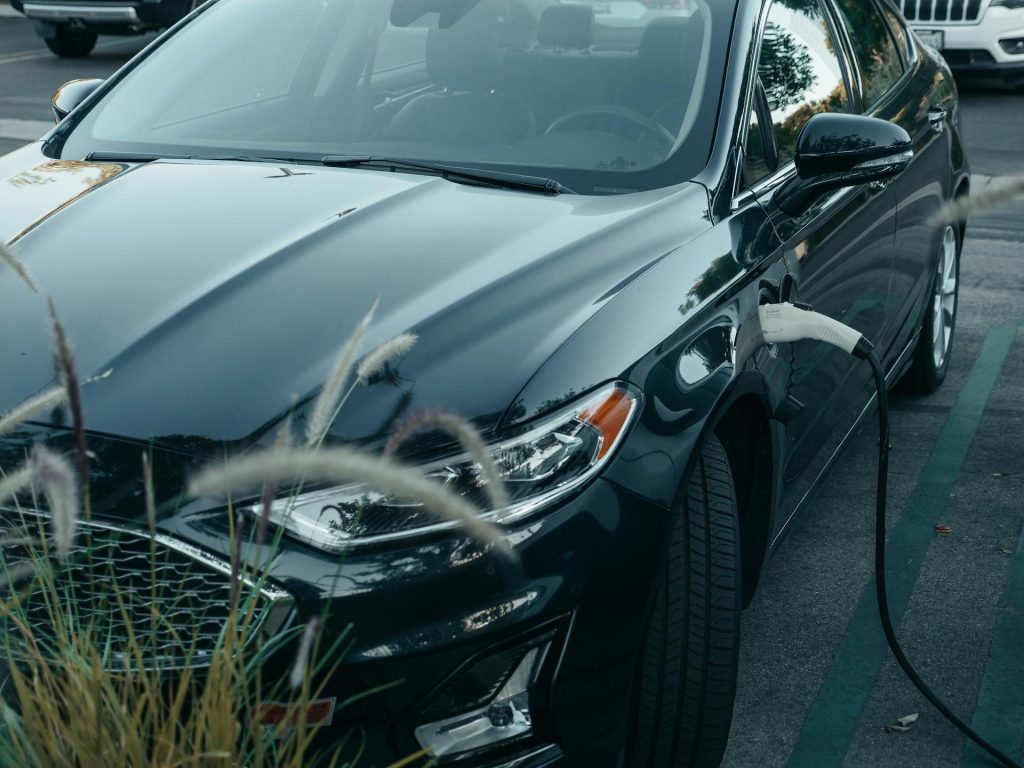
In this guide, we’ll cover everything you’ll need to know before buying one. So let’s get straight into it…
1. What is a Portable EV Charger?
In laymen’s terms, a portable EV charger is a plug-in device that connects to a standard outlet. Instead of mounting permanently on a garage wall, you can take it with you. It works exactly like an appliance, plug it in, connect it to your car, and charging begins.
Portable chargers usually support:
● Level 1 charging (120V) – Slow, but works from any household outlet. Adds approximately 3–5 miles of range per hour.
● Level 2 charging (240V) – Faster, when used with outlets, for instance, NEMA 14-50 or 6-50. Adds roughly about 20–35 miles of range per hour.
The difference between portable and wall-mounted units boils down to flexibility. Wall chargers are faster and permanent. Portable chargers are slower, however, very practical for renters, travelers, or anybody who wants a backup option.
2. Main features to Look for When Buying
2.1 Amperage and Power Output
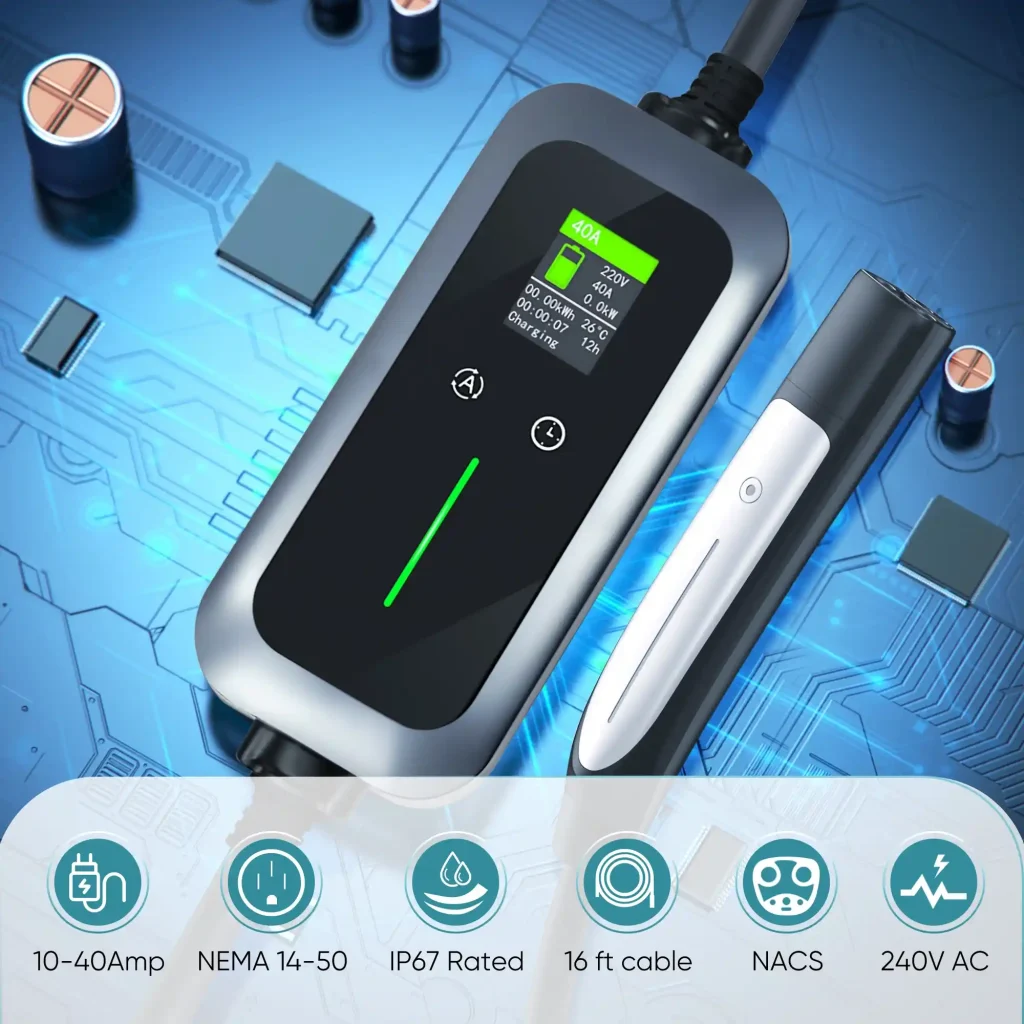
Amperage directly affects charging speed. Typical portable chargers range from:
● 16A – Adds approx 10–12 miles per hour at 240V.
● 32A – Adds about 20–25 miles per hour.
● 40A – Adds up to 35 miles per hour.
Most newer EV models in the United States support at least 32A on Level 2 and anything beyond 40A is rare in portable designs.
2.2 Connector Types
● J1772 – The universal plug for all non-Tesla EVs in America.
● NACS (Tesla plug) – Tesla’s North American Charging Standard, adopted by Ford, GM, and more in 2025. By 2026, most new EVs will ship with NACS.
Many portable chargers include adapters so you can charge Teslas and non-Teslas with one unit.
2.3 Plug Types
The charger side plugs into a wall outlet. Options include:
● NEMA 5-15: Standard household 120V outlet. Slowest, but always available.
● NEMA 14-50: The most popular 240V outlet. Often used for RVs or electric stoves. Provides faster Level 2 speeds.
● NEMA 6-50: Common in garages or workshops. Another 240V option.
2.4 Adjustable Current Settings
This feature is a must-have. It lets you reduce the current draw if your wiring can not handle full power. Let’s say you have a 32A portable charger plugged into a garage outlet wired for 30A, it will certainly trip the breaker. However, with the adjustable current settings, you can avoid such mishaps by simply dialing the charger down to 24A. Hence, you stay within safe limits and avoid interruptions.
2.5 Smart Features
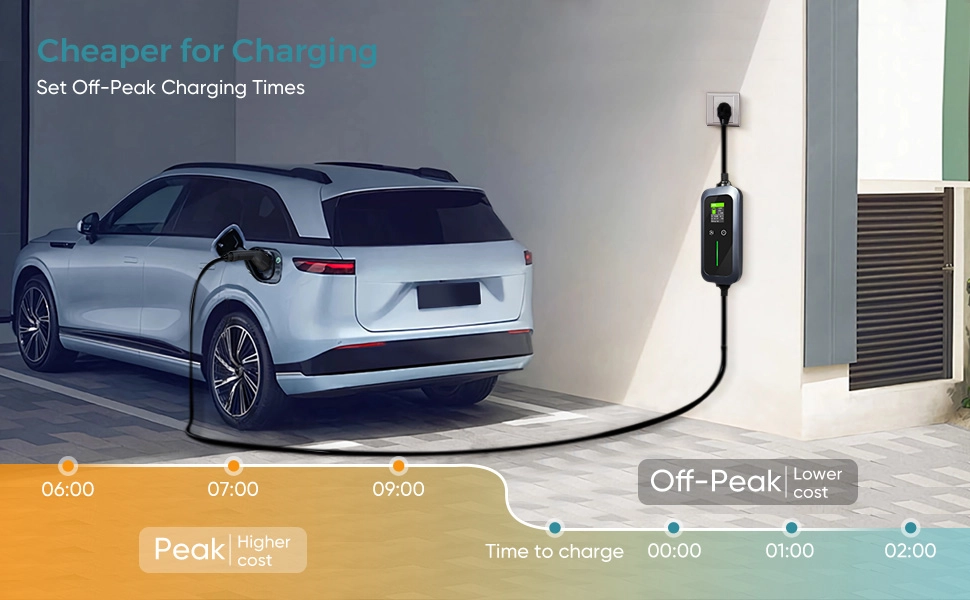
Some premium chargers now include WiFi or Bluetooth. You can schedule charging, view energy usage, and track costs through an app. While most portable chargers stick to the basics, Duevolt’s “M” series models add a delay charging function, which lets you start charging later at night when electricity rates are often cheaper.
2.6 Safety Considerations
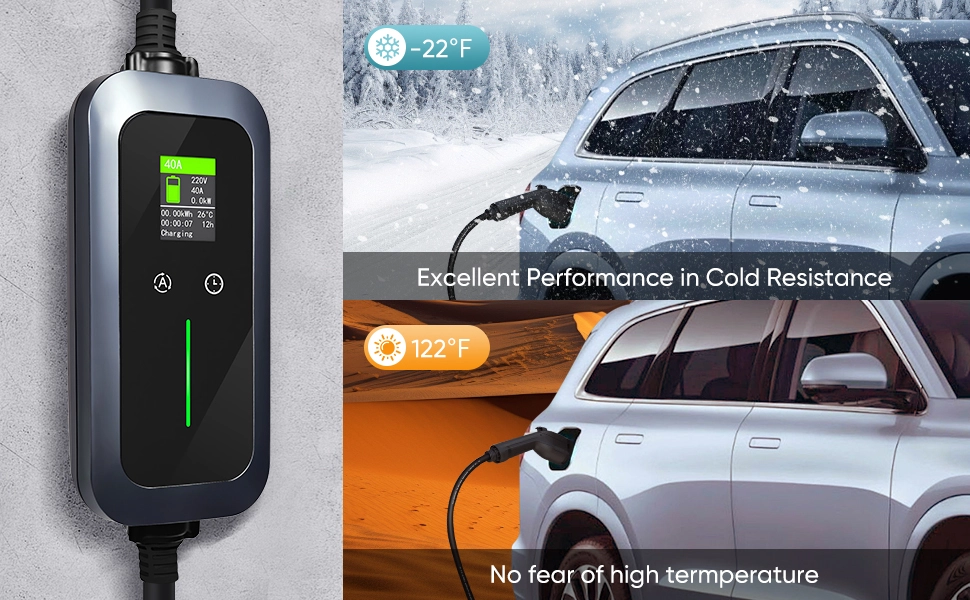
EV chargers move a lot of power, and safety is definitely non-negotiable. Here are some nuts and bolts you should keep in mind:
● Certification – Always check for UL or ETL listing. These marks confirm the charger meets U.S. electrical safety standards.
● Built-in protections – Overcurrent, overheating, surge protection, and ground fault detection.
● Water and dust resistance – Look for IP ratings like IP65 if you plan outdoor use.
● Proper outlet use – Extension cords are discouraged for EV charging. If absolutely necessary, use heavy-duty cords rated for high amperage.
A reliable charger means it should be safe for you, your vehicle, and for the electrical system as well.
3. Compatibility With Your EV
Obviously, a charger must be compatible with the vehicle. And fortunately, most portable chargers cover that very well. However, still to avoid any issues, here are a few details that must match:
● All non-Tesla EVs – Use J1772 plugs. Any portable charger sold in the U.S. will support this.
● Tesla drivers – Need either a charger with NACS plug or a J1772-to-NACS adapter. Tesla includes one with new cars.
● Onboard charger limits – Every EV has an onboard charger that controls intake power. For example, some EVs max out at 32A. Buying a 40A portable charger would not charge faster in such a case.
Some examples for 2025:
● Tesla Model Y – Supports up to 48A with NACS. Portable chargers will cap at 40A.
● Ford F-150 Lightning – Handles 32A–40A on Level 2, ideal with a 14-50 outlet.
● Chevy Blazer EV – Supports 11.5 kW AC charging. Works well with a 40A portable unit.
● Hyundai Ioniq 6 – 10.9 kW onboard charger. Again, a 32A–40A portable charger is optimal.
4. When a Portable Charger Makes Sense?
A portable EV charging station may not be for everybody. However, in most cases, it’s a smart buy.
Best suited for:
● Renters who can not install permanent wall units.
● Road trippers who want a backup.
● Drivers without garages, who rely on outdoor outlets.
● Second-car households where one EV does not need daily fast charging.
Less ideal for:
● Families with two or more EVs require daily charging.
● Owners who drive over 200 miles a day and need high-speed charging at home.
All things considered, we suggest that anyone who drives an electric vehicle, a Portable Charger is a must-have. You may ask why? Well, because it’s always smart to have a backup. You never know when you may need it.
5. Duevolt’s Portable EV Charger Catalog
Portable EV chargers generally fall into three practical tiers. Duevolt focuses on only 40A, Level 2 portable units with dual‑voltage flexibility and adjustable current.
Value Picks (~$199–$220)
Simple, capable, and travel-friendly. Ideal if you want Level 2 speed without extra bells and whistles.
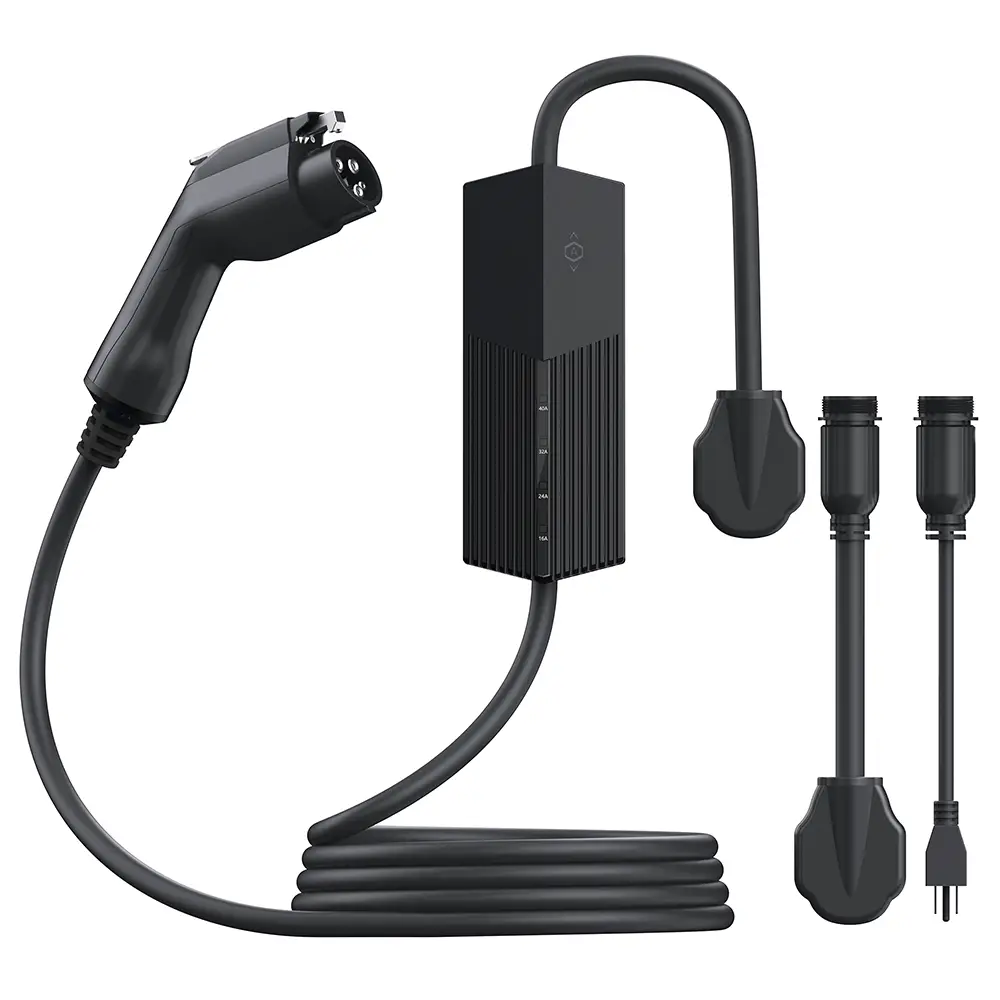
● J1772: DUEVOLT Level 1 & 2 Portable EV Charger, 16–40A, dual NEMA 5‑15 and 14‑50 — up to 9.6 kW, adjustable current, and Level 1 or Level 2 from the same unit.
● Tesla NACS: DUEVOLT Level 1 & 2 Tesla Portable EV Charger, 16–40A, dual NEMA 5‑15 and 14‑50 – native NACS plug, no adapter needed, dual‑voltage convenience.
Core Picks (~$229)
Adds quality‑of‑life features for daily use, like delay charging to target off‑peak rates.
● J1772: DUEVOLT Level 2 Portable EV Charger, 16–40A, NEMA 14‑50, delay charging – up to 9.6 kW with adjustable current and scheduling. This is among the best portable ev charger in 2025 which we recommend for ev owners.
Higher‑Spec Portable (~$249)
Best fit if you want native NACS plus scheduling for a daily portable setup.
● Tesla NACS: DUEVOLT Level 2 Tesla Portable EV Charger, 16–40A, NEMA 14‑50, delay charging – native NACS, up to 9.6 kW, adjustable current, and delay start.
Quick notes for readers
● All listed units are adjustable 16–40A, so you can dial down current on tighter circuits and avoid nuisance trips.
● Dual‑voltage flexibility is standard in the “Value” picks above, letting you charge from 120V or 240V with the included plugs.
6. Installation and Setup Basics
- Choose the right outlet: Most portable EV charging stations, including Level 2 units, use NEMA 14-50. If you don’t have one, call an electrician.
- Check breaker size: A 40A charger requires a 50A circuit breaker for safety.
- Plug in: Connect the charger to the outlet, then plug into the car’s port.
- Set amperage if adjustable: Match to your outlet and breaker rating.
- Monitor the first few charges: Assure no breakers trip or outlets overheat.
When in doubt, always involve a licensed electrician.
7. Maintenance and Care
Portable chargers last years if treated properly.
● Storage: Coil cables loosely, avoid sharp bends.
● Keep dry: Even waterproof chargers should be stored indoors when not in use.
● Clean regularly: Wipe plugs and handles with a dry cloth.
● Inspect: Check for frayed cables, cracked plugs, or overheating signs.
● Update: If your charger has smart features, install firmware updates.
8. Final Thoughts
As automotive companies moving towards fully electric, the old uncertainty about charging standards is fading away. Portable car charger have become a must-have for anyone driving an EV today.
We hope this guide has given you a clearer view of what matters most and helped you narrow down which charger makes sense for your needs.
We’ve laid out the fundamentals every portable charger should include, from amperage to connectors to safety.
And when you’re ready to buy one, it’s worth choosing a reputable name like Duevolt, so you know your charger will perform when you need it most.
